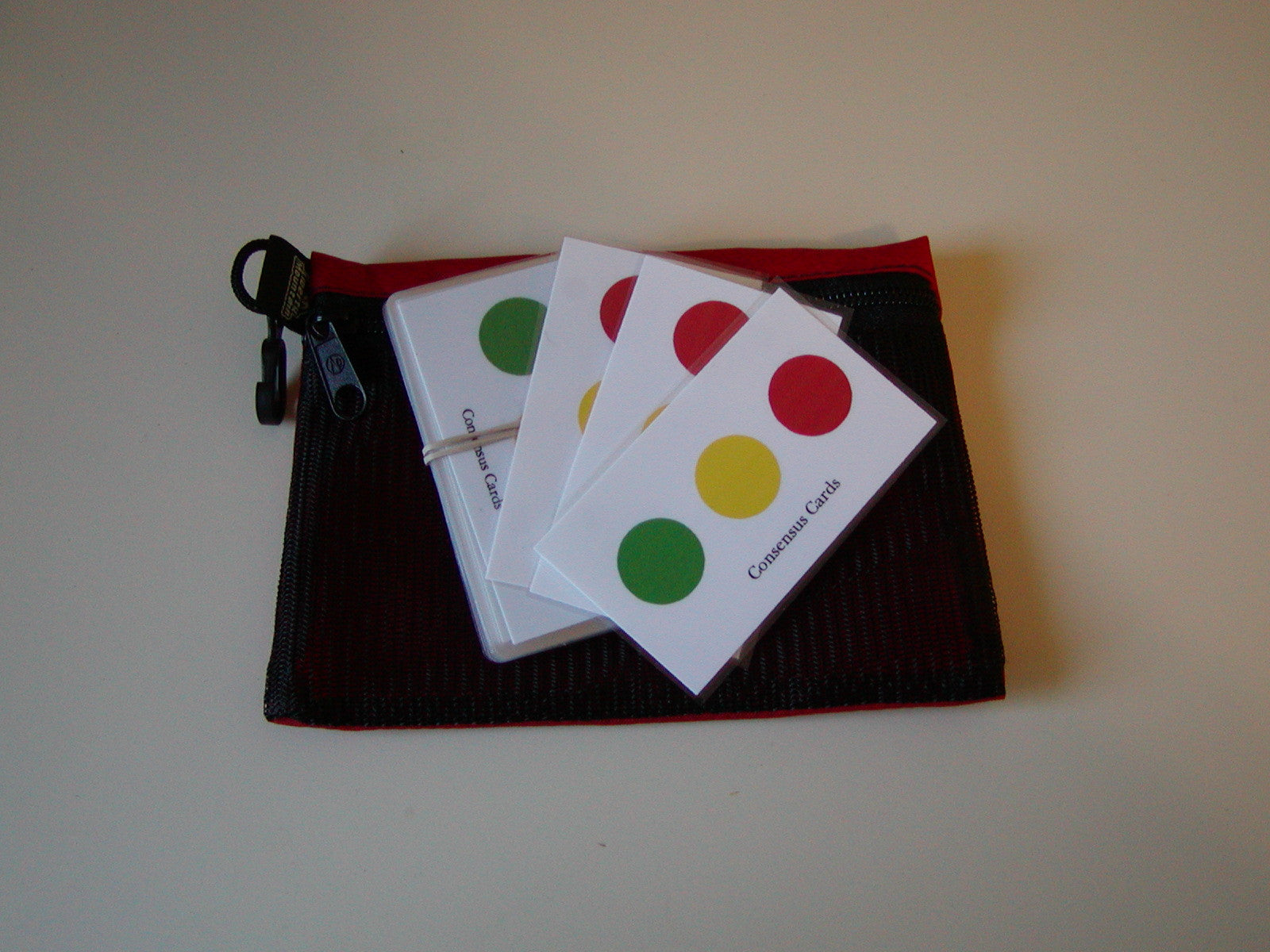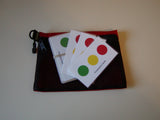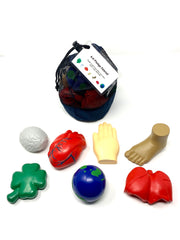Consensus Cards
These cards are designed to help your groups with the concept of consensus, rather than majority rules. Each deck comes with 35 laminated stoplight cards and is packaged in a mesh envelope.
Directions: Consensus cards are palm-sized cards with three colored circles arranged like a stop light on it.The top circle is red, next is yellow, followed by green at the bottom. On the back, the definition of each color is printed: red indicates I do not agree with this plan, yellow indicates that I need more information/I have a question before proceeding, and green indicates that I do agree with this plan. Each member of the group receives one consensus card. Once a proposal is given to the group, each member votes by holding up his/her card with two of the three colors covered by his/her hand. If everyone is green, the group can go forward with the proposal. If anyone is yellow, the group must respond to the person’s need or request before continuing. If anyone is red, the person is given the opportunity to explain his/her resistance and offer a compromise. This visual voting system allows the group to quickly hear from each person and the use of the stoplight colors is familiar to them. Consensus cards work best when initially introduced as a decision-making tool for a decision that doesn’t have a huge impact on the group. For example, you might ask the group to decide how many hits they want as their goal for the activity Moonball, and then introduce the consensus cards for them to use to find out if everyone is in agreement. You can then continue to have the group use the cards throughout the day for increasingly difficult decisions.
Directions: Consensus cards are palm-sized cards with three colored circles arranged like a stop light on it.The top circle is red, next is yellow, followed by green at the bottom. On the back, the definition of each color is printed: red indicates I do not agree with this plan, yellow indicates that I need more information/I have a question before proceeding, and green indicates that I do agree with this plan. Each member of the group receives one consensus card. Once a proposal is given to the group, each member votes by holding up his/her card with two of the three colors covered by his/her hand. If everyone is green, the group can go forward with the proposal. If anyone is yellow, the group must respond to the person’s need or request before continuing. If anyone is red, the person is given the opportunity to explain his/her resistance and offer a compromise. This visual voting system allows the group to quickly hear from each person and the use of the stoplight colors is familiar to them. Consensus cards work best when initially introduced as a decision-making tool for a decision that doesn’t have a huge impact on the group. For example, you might ask the group to decide how many hits they want as their goal for the activity Moonball, and then introduce the consensus cards for them to use to find out if everyone is in agreement. You can then continue to have the group use the cards throughout the day for increasingly difficult decisions.





